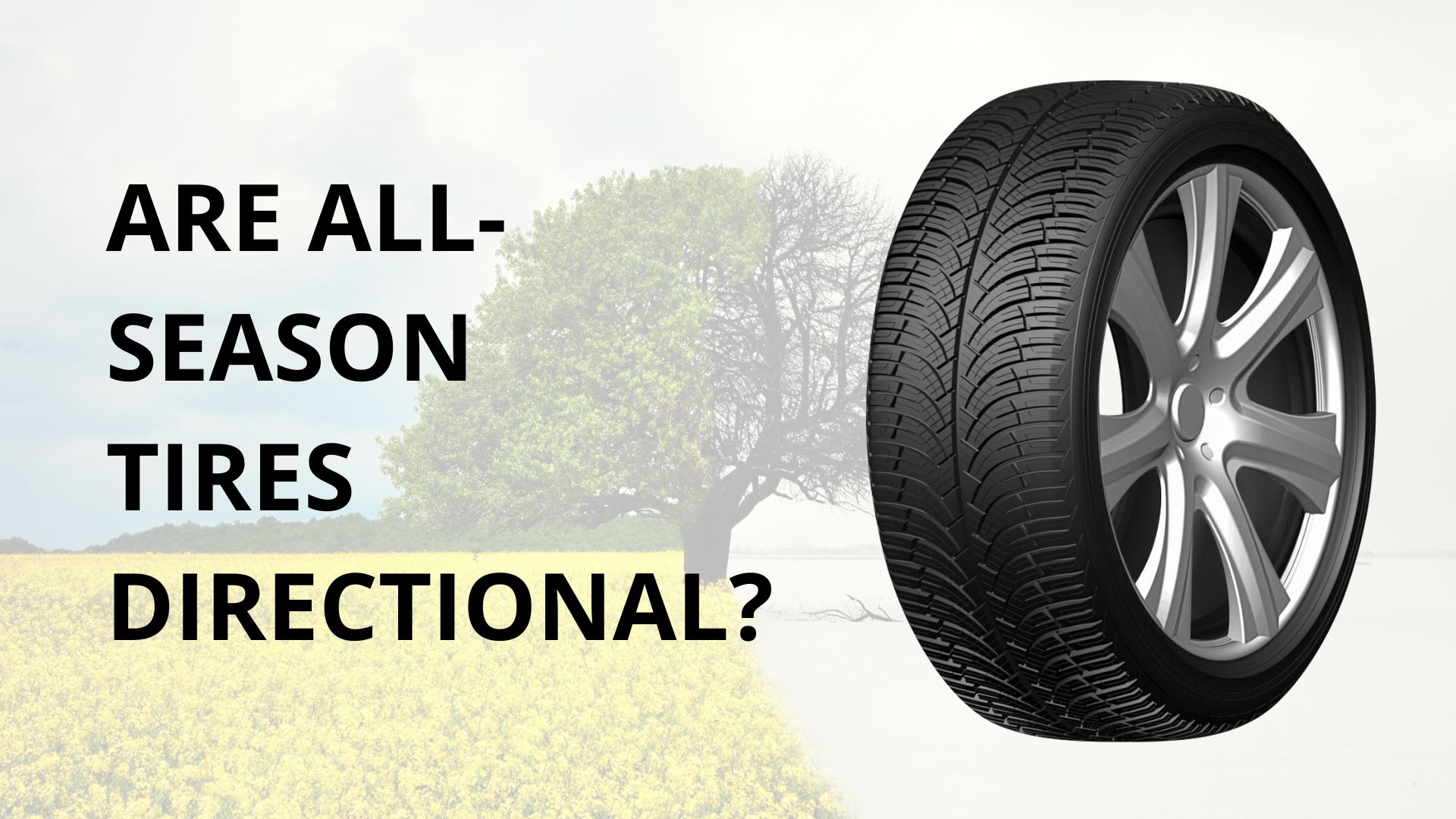Last Updated on August 10, 2025 by Tom
Take a second while your car’s parked and get close enough to check the tread. You might see a pattern that angles forward, almost like it’s meant to move in one direction. That small detail tells you a lot. Some all-season tires are built to turn only one way, and if that’s the case, how they’re installed, rotated, and even how they grip in heavy rain starts to shift.
If you’ve never paid attention to tread patterns before, don’t worry, most drivers haven’t. But now that you’re asking, “Are All-Season Tires Directional?”, you’re on track to make smarter decisions about the rubber you’re rolling on.
What It Means When a Tire Is Directional and Why That Arrow on the Sidewall Matters
Directional tires, sometimes called unidirectional, are built to spin in only one direction. You’ll see the difference right away in the tread design, usually a sharp, angled pattern that looks like a chevron or arrow, designed to slice through standing water and push it out from under the tire. That’s where the performance advantage delivers with better grip on wet roads, quicker water evacuation, and stronger traction at higher speeds.
Flip to the sidewall and you’ll see a clear indicator. An arrow labeled “Rotation” shows which way the tire should roll when mounted correctly. Get it backwards, and the benefits disappear. You won’t just lose wet traction, you could create uneven wear, extra noise, and poor braking when it matters most.
Are All-Season Tires Directional? How Your Tread Pattern Shapes the Ride
Most all-season tires don’t follow a directional tread pattern. The kind you’ll find on everyday vehicles like sedans, small SUVs, crossovers are usually symmetrical or asymmetrical.
Symmetrical tires have a tread that stays the same across the whole surface. That makes things easier when it’s time to rotate; you can move them front to back or side to side without remounting anything. They wear in a balanced way and tend to stay quiet, which works well if you’re driving to work, running errands, or just need something reliable.
Asymmetrical tires mix it up. The inner part of the tread handles wet traction; the outer edge is tuned for better cornering and dry performance. These aren’t directional, but they do need to be mounted with the correct side facing out. That’s usually marked on the sidewall with a simple “Outside” label.
Directional all-seasons exist, but they tend to appear more on sportier vehicles or premium models that need better grip at higher speeds. If your driving involves long freeway stretches, heavy rain, or occasional aggressive turns, that kind of design might appeal to you.
How Tread Direction Affects Rotation Patterns and What Happens If You Get It Wrong
Both types wear evenly, stay quiet, and work well for daily use when you want dependable tires where your handling, fuel economy, and road-feel stay consistent. But the downside is they don’t give you the same flexibility when it comes to rotation.
Directional tires can only be rotated front-to-back unless you take the tire off the wheel and remount it facing the opposite direction. That means more labor, especially if you’re rotating all four. If they’re rotated the wrong way, say, left to right, they’re spinning backwards, which wrecks the benefits and may even make driving riskier in the rain.
With symmetrical or asymmetrical tires, you get more options. You can rotate them in any direction that matches your vehicle’s wear pattern, no remounting required. That makes routine tire care easier and usually helps those tires last longer too.
Spotting a Directional Tire – Look for the Clues in the Tread and Sidewall
Look at the tread. If it looks like a single arrow pointing forward, that’s a strong sign you’re dealing with a directional tire. These patterns are designed to channel water directly away from the center of the tire to reduce hydroplaning at speed.
Check the sidewall. Directional tires always show a rotation arrow or label that confirms which way the tire is supposed to turn.
If you don’t see that arrow, the tire is either symmetrical or asymmetrical. If it just says “Outside” on one side, it’s asymmetrical. In case there are no markings at all, you’re probably looking at a symmetrical design.
Do Directional All-Season Tires Perform Better in Wet Weather?
Directional tread designs shine in specific conditions. If you’ve ever hydroplaned on a freeway or felt your car drift slightly during a downpour, that’s where directional tires earn their place. They push water out faster, keep the contact patch drier, and maintain stability when roads get slick.
They also help with high-speed control. If you drive a sedan or coupe with a little extra power, or just like your ride to feel tight and responsive, directional all-seasons can sharpen the feel of the road under you.
But they’re not perfect, because they’re limited in how you rotate them, and you might deal with uneven wear if you’re not on top of maintenance. If you accidentally mount them backwards, they won’t perform like they should.
They also tend to cost more than non-directional options, and that added performance doesn’t always translate if your driving style is more relaxed.
Are All-Season Tires Directional? Final Word Before You Buy
When it’s time to replace your tires, the directional question should be part of your checklist. Not because one type of tire is the better choice for your vehicle, but because driving habits and local conditions determine which tread works best for the way you drive, and improve your experience on the road.
If your daily routine involves long highway commutes, frequent rain, and a car that benefits from tighter handling, directional all-seasons might be a solid fit. But if you value quieter rides, simpler rotation, and longer tread life, a symmetrical or asymmetrical design will save you time and cost over the long term.

